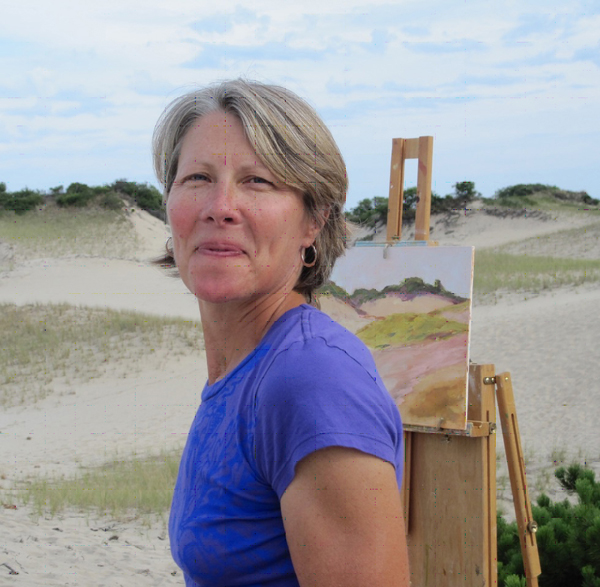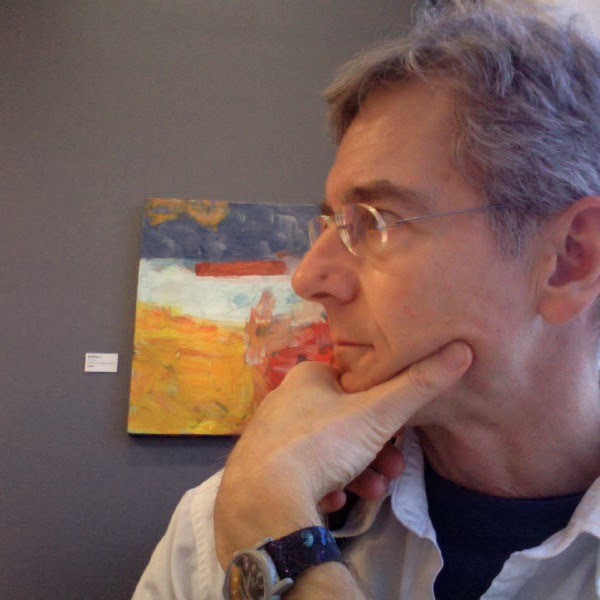How does the artist paint the landscape while, at the same time, paint from the “deeps” of the soul? Painter Emily Carr posed that question to herself as she painted alone in the forests of British Columbia sometime in the 1930’s. “What do I want to express? ... The arrangement, the design, colour, shape, depth, light, space, mood, movement, balance, not one or all of these fills the bill. There is something additional, a breath that draws your breath into its breathing, a heartbeat that pounds on yours, a recognition of the oneness of all things,” she writes in her journal.
Read moreColleen Sabo: Playing Favorites with Oil
In her May 2016 Touchstone Gallery solo exhibition, A Few of My Favorite Things, Colleen Sabo introduces her new body of work in oils. Long a color painter in water media, Colleen shifted her focus to oil several years ago and has not looked back since.
Read moreGuest Artists: John Blee and Dee Levinson
Washington, DC, artist Dee Levinson learned at an early age to collage imagery and colors together. As a child she began by pasting small museum art reproductions into little booklets her mother provided. This seemingly inconsequential activity instilled in Levinson the notion that one could mix just about anything together to make a piece of art. Today she does this “collaging” by mixing classical forms painted in a linear manner with highly saturated colors reminiscent of early 20th century German Expressionists.
John Blee, a Washington DC artist, explores new spatial and emotional dimensions in Orchard Suite, his latest series of acrylic paintings on exhibit at Touchstone Gallery. While most of his works vibrate with the intense spring blossom hues that are signature to his palette, several other paintings offer deeper, nocturnal shades, reflecting inverse color themes. Playful geometries activate abstract, luminous sky-and-earth compositions and dance with one another to create an unlikely balance and playfulness. The effect in the viewer is usually an uplifted spirit one might call joie de vivre.
Figure 8 plus 1 (Part 1)
Rimpo’s fascination with people continues today and is reflected in her figurative work. Her semi-abstract method of working results in portraits that are about a mood, an everyday activity, or a way of life, rather than detailed portraiture. She uses a variety of textural techniques in her paintings, but only uses a technique when she believes it enhances the story. In this exhibit you will meet people Rimpo saw when traveling within the United States and in Guatemala. In each case something grabbed her attention and made Rimpo feel she just had to tell the story. Can you find a story in her paintings?
Read moreMcCain McMurray: From Architectural Drawings to Geometric Paintings
Malleability is a relative term depending on the material a person is trying to shape. For architects, wood, metal, masonry and glass are molded as necessary to build a structure inside and out. McCain McMurray worked with these materials during his 37-year career as an architect designing a variety of residential and commercial projects. It’s no surprise that he was drawn to architecture, because he started constructing things when he was a child growing up in North Carolina. Equipped with tools and wood scraps, he built many a tree house.
Read moreCharles Goldstein: Painting His Way Through Memories
Natalie Portman once said," Everyone dreams of living in Paris," a city both beautiful and severely scarred by periods of cruelty, revolution and war. Artist Charles Goldstein doesn't just dream of Paris. This is where he was born and near where he lives now. However romantic the Paris of our dreams is, reality is different for Charles. The memories he paints in Les Chemins de Memoire (The Paths of Memory) currently on exhibit at Touchstone Gallery, are rooted in the Holocaust and the disappearance of 84 members of his close family in France and in Poland.
Read moreShelley Lowenstein: Painter of Crowds and Spaces
As a 7-year-old living in Connecticut, Shelley Lowenstein rode the bus downtown with her best friend to explore the stores on Main Street, and to spend their allowances in Woolworth's five-and-dime. The shopping was fun but Shelley loved watching people and making up stories about them in her mind. What did they do? Where were they from? Where were they going? Around the same time, Shelley discovered movies. Once a week she settled down into the dark recesses of the local theater and escaped into other worlds which sparked her imagination even more. Ever since these youthful experiences, Shelley has been fascinated by how people are in public spaces.
Read more




